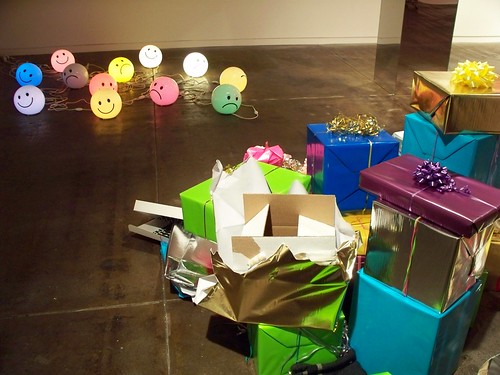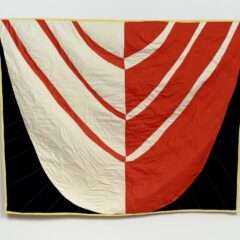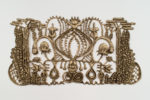Post by Jennifer Zarro
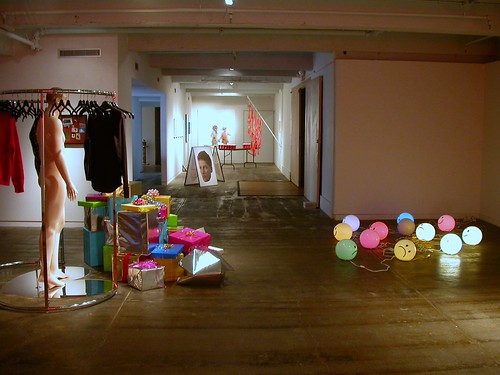
Installation shot of Alex Da Corte and Jack Sloss’s Love Explosion at Fleisher-Ollman Gallery.
The party is over and everyone must go. There’s a morning-after feeling to the Jack Sloss and Alex Da Corte show on view at the Fleisher Ollman Gallery. Piled-up presents are partially opened, colored globe lights on the floor wear happy and sad faces – they’re reminiscent of deflating balloons on the day after a party.
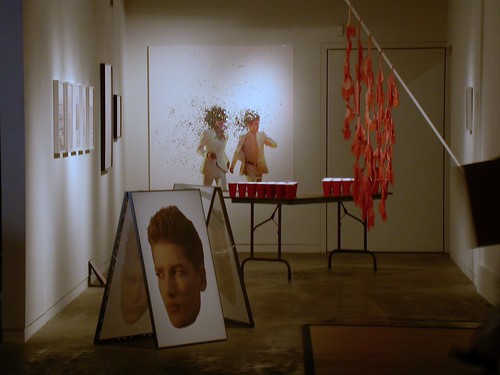
Da Corte’s Flag, drinking game and head shots.

A folding table set up for a drinking game holds plastic cups filled not with beer but liquid glitter. Jack Sloss’s photo collages of Olde English 800 advertisements hang nearby. And a new American flag by Da Corte signals a party atmosphere with its salmon-pink color and its fringe, the likes of which a Supreme might have worn on stage. But the flag can also be read as tattered, weathered, and anarchistic; it has lacy holes in it, and it droops on its flag pole.
There are other reminders of not so happy things here too that tinge the party atmosphere with regret and anxiety. Sloss’s Love Explosion, Cranial Sections with Gunshot Wounds, are small bronze casts of gun shot holes. It’s the most obvious reminder of violence here.
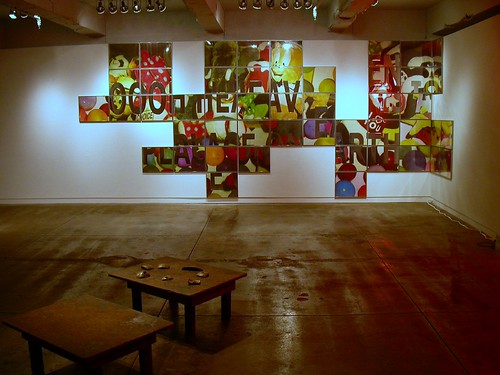
Jack Sloss’s Love Explosion (Cranial Sections with Gunshot Wounds) with Da Corte’s “Sign” in the backround
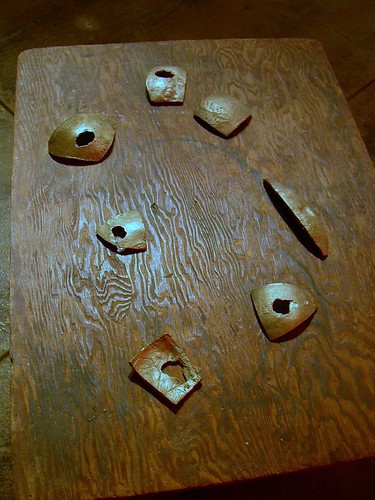
detail of Sloss’s Cranial Sections
Da Corte’s black snake (Accessory, Gothic) (not shown) twirls in a virtine nearby, another reference to the evil in the garden. Looking closely at the snake, viewers can see their own reflection in the mirrored base and may have to come to terms with their desires for this or other sparkly objects, especially considering that what we’re looking at is a rattle snake, and rattle snakes can kill.

Photo by Jennifer Zarro. Glitter and advertising go together here.
Advertisements have a strong presence in the exhibition. Da Corte’s Screen is an almost familiar billboard, but the words and pictures are jumbled up and confusing; what are we supposed to want? His Picture Texts are sandwich boards with just the floating heads of young, good-looking men seemingly taken from fashion ads. Presented in this familiar advertising format, they become even more confusing – are these heads trying to sell us something, or to say that advertising is really just empty and meaningless?
There’s so much that’s glossy and sparkly in this show, so much surface beauty and shine. But there are also reminders of devastation. Da Corte’s Giving Tree is a work that allows visitors to open a present, mostly all filled with Da Corte’s own clothes, and then hang the piece of clothing on the rack near a mannequin. There are few things more fun than telling your three-year old that it’s OK to tear up works of art in a gallery. But while my son sat opening presents from the Giving Tree, Sloss’s Entanglement video played behind us showing the wrapped-up bodies of dead children somewhere in the Middle East. Ugh.
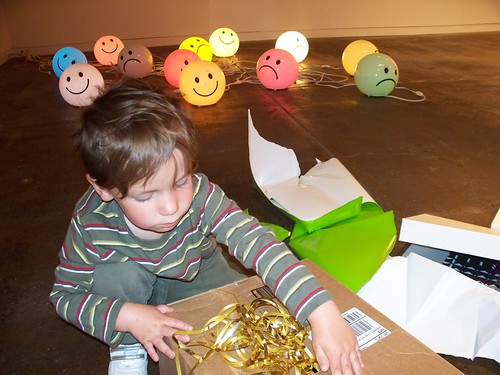
The writer’s son, Asher, opening presents in Da Corte’s installation at Fleisher-Ollman Gallery.
We were lucky to be there on a day when Da Corte was in the gallery. He said he goes in regularly to change the sign near the entrance to the show.
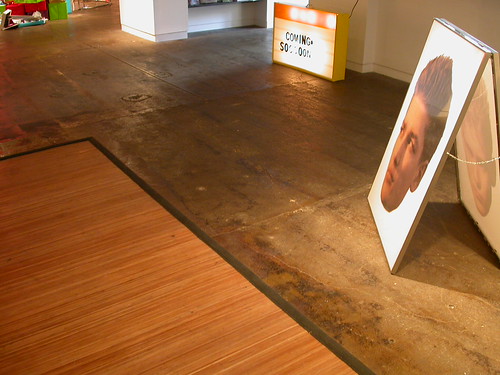
Da Corte found the sign (on the floor). He changes the message periodically.
On my first visit the sign read, “Everyone Must Go.” It was fitting for “the party’s over” vibe. On this day, the sign read, “The end is not the end,” and that seemed fitting, too. The artist noted that the words on the sign may have to do with salvation, and that sometimes the little things we continue to do everyday – raise the American flag, turn on the lights and the TV, give presents – we do in spite of (maybe because of?) all the bad things that happen.
P.S. – A big congratulations to Da Corte who will be going to Yale in the fall to pursue an MFA! And, Fleisher Ollman Gallery has extended the Love Explosion exhibition until May 24.
–Independent art historian Jennifer Zarro, earned her PhD from Rutgers last spring. Her most recent piece for artblog was on When Photography and Printmaking Collide at the Free Library. See her Q&A with Alex Da Corte in Art Matters.
[for more on Da Corte, read artblog correspondent Annette Monnier’s interview with the artist.


